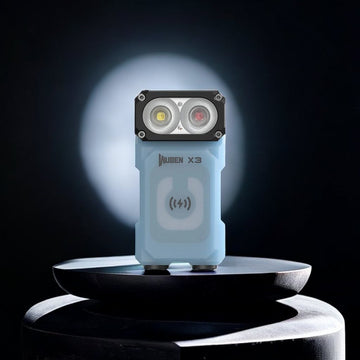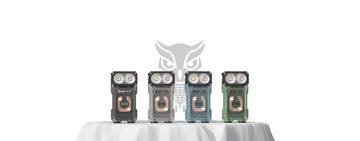
Lumens and lux are two different units of measurement used to quantify light. Lumens measure the total amount of visible light emitted by a light source, while lux measures the illuminance or light intensity on a surface per unit area.
The relationship between lumens and lux is interconnected and dependent on the distance from the light source. When light spreads out from the source, its intensity decreases with increasing distance, following the Inverse Square Law. This means that the further you move from the light source, the lower the lux level will be on the surface.
To determine how many lumens are required to achieve 2500 lux on a surface, you need to consider the area you want to illuminate and the distance of that area from the light source. The formula for converting lux to lumens is:
Lumens = Lux × Area (in square meters)
This formula allows you to calculate the total luminous flux needed to achieve a specific illuminance level. It is crucial to use accurate measurements for area and distance to obtain reliable results.
Let's consider a practical example to understand the conversion better. Suppose you have a desk measuring 2 square meters, and you want to illuminate it with an illuminance level of 2500 lux. If the desk is located at a distance of 1 meter from the light source, you can calculate the lumens needed using the formula:
Lumens = 2500 lux × 2 square meters
Lumens = 5000 lumens
In this scenario, you would require a light source that emits 5000 lumens to achieve an illuminance level of 2500 lux on your desk.
Understanding the relationship between lumens and lux is crucial when selecting the appropriate light bulb for different settings. Whether it's for a cozy living room, a brightly lit kitchen, or a focused study area, knowing the right lumens needed to achieve the desired lux level ensures that you have the ideal amount of light for each space.
In various environments like offices, workspaces, or retail stores, sufficient illumination is vital for productivity, safety, and customer experience. By calculating the lumens required to achieve a specific lux level, lighting designers and architects can ensure that the space is adequately lit, promoting comfort and efficiency.
The interplay of lumens and lux also plays a significant role in setting the ambiance of a room. In spaces like restaurants, hotels, or homes, the desired atmosphere can be achieved by adjusting the brightness and light intensity. Understanding how many lumens are needed to achieve a specific lux level helps create the desired mood and ambiance for any occasion.
In conclusion, understanding the relationship between lumens and lux is essential for making informed decisions about lighting design and selecting the appropriate light sources. By knowing how to calculate the lumens required to achieve a specific lux level, we can ensure adequate illumination in various settings, enhancing productivity, safety, and overall well-being. Whether you are designing a workspace, setting up a cozy living room, or planning the lighting for a special event, having a grasp of these measurements empowers you to create the perfect lighting environment for any situation.
The relationship between lumens and lux is interconnected and dependent on the distance from the light source. When light spreads out from the source, its intensity decreases with increasing distance, following the Inverse Square Law. This means that the further you move from the light source, the lower the lux level will be on the surface.
To determine how many lumens are required to achieve 2500 lux on a surface, you need to consider the area you want to illuminate and the distance of that area from the light source. The formula for converting lux to lumens is:
Lumens = Lux × Area (in square meters)
This formula allows you to calculate the total luminous flux needed to achieve a specific illuminance level. It is crucial to use accurate measurements for area and distance to obtain reliable results.
Let's consider a practical example to understand the conversion better. Suppose you have a desk measuring 2 square meters, and you want to illuminate it with an illuminance level of 2500 lux. If the desk is located at a distance of 1 meter from the light source, you can calculate the lumens needed using the formula:
Lumens = 2500 lux × 2 square meters
Lumens = 5000 lumens
In this scenario, you would require a light source that emits 5000 lumens to achieve an illuminance level of 2500 lux on your desk.
Understanding the relationship between lumens and lux is crucial when selecting the appropriate light bulb for different settings. Whether it's for a cozy living room, a brightly lit kitchen, or a focused study area, knowing the right lumens needed to achieve the desired lux level ensures that you have the ideal amount of light for each space.
In various environments like offices, workspaces, or retail stores, sufficient illumination is vital for productivity, safety, and customer experience. By calculating the lumens required to achieve a specific lux level, lighting designers and architects can ensure that the space is adequately lit, promoting comfort and efficiency.
The interplay of lumens and lux also plays a significant role in setting the ambiance of a room. In spaces like restaurants, hotels, or homes, the desired atmosphere can be achieved by adjusting the brightness and light intensity. Understanding how many lumens are needed to achieve a specific lux level helps create the desired mood and ambiance for any occasion.
In conclusion, understanding the relationship between lumens and lux is essential for making informed decisions about lighting design and selecting the appropriate light sources. By knowing how to calculate the lumens required to achieve a specific lux level, we can ensure adequate illumination in various settings, enhancing productivity, safety, and overall well-being. Whether you are designing a workspace, setting up a cozy living room, or planning the lighting for a special event, having a grasp of these measurements empowers you to create the perfect lighting environment for any situation.
Related Articles




